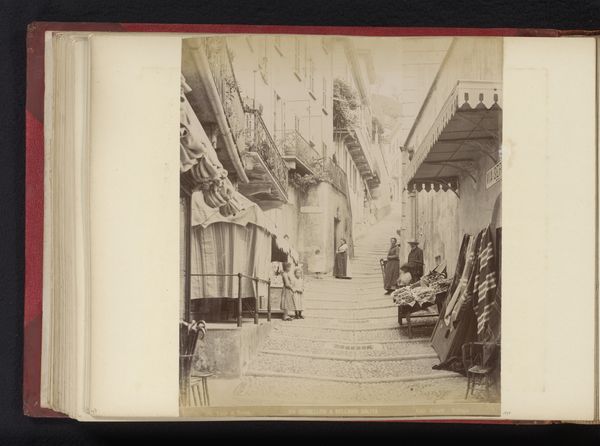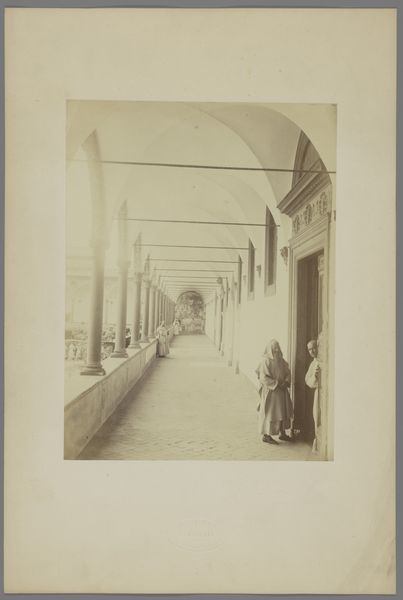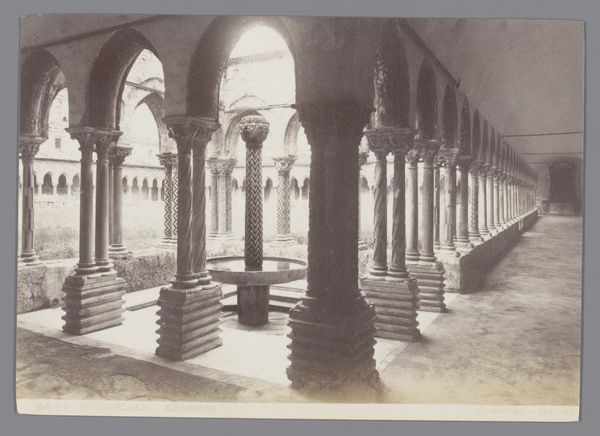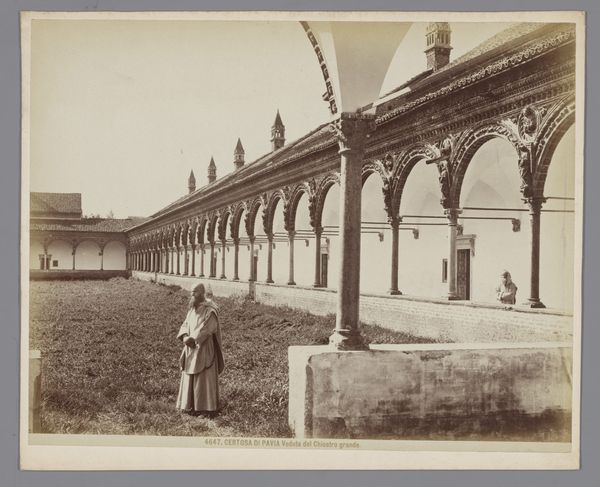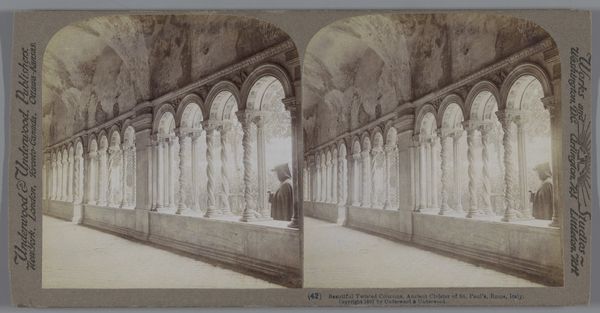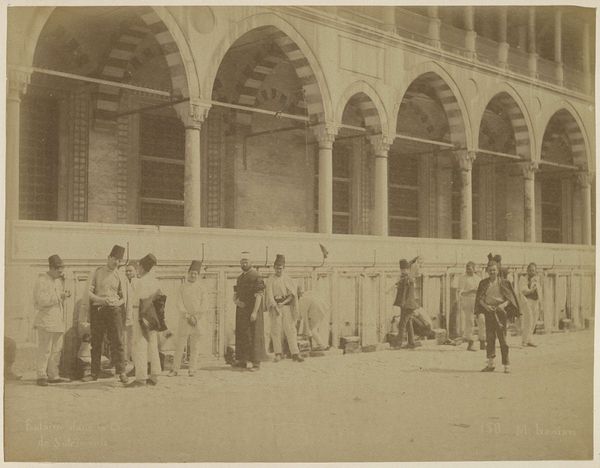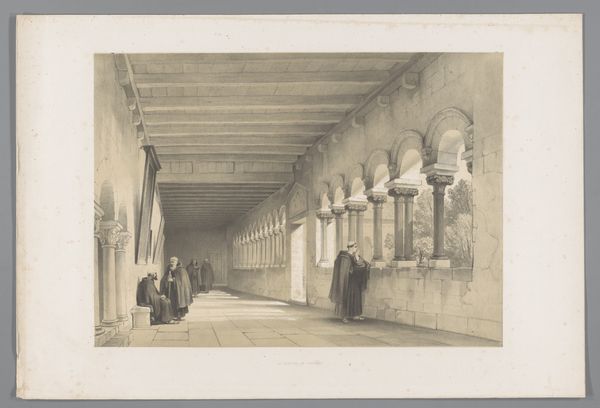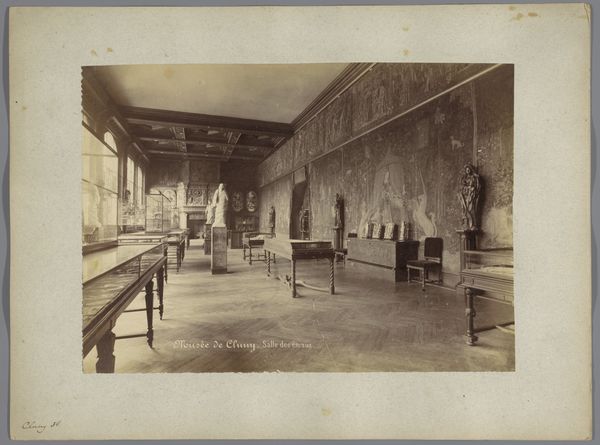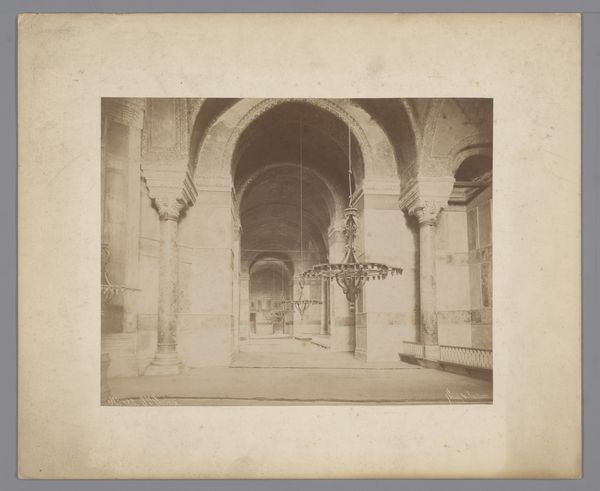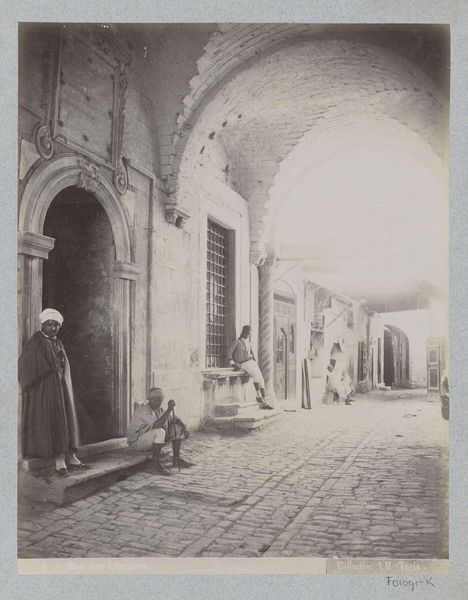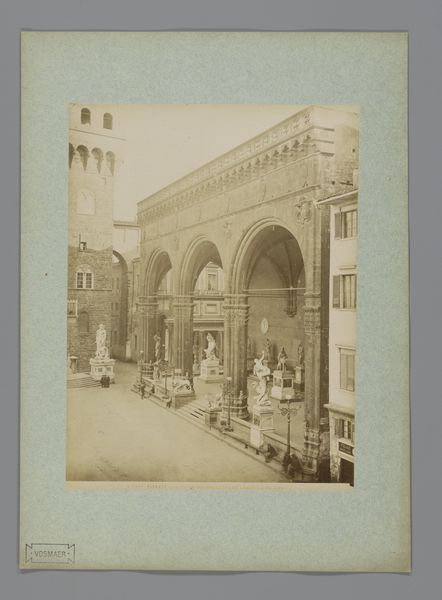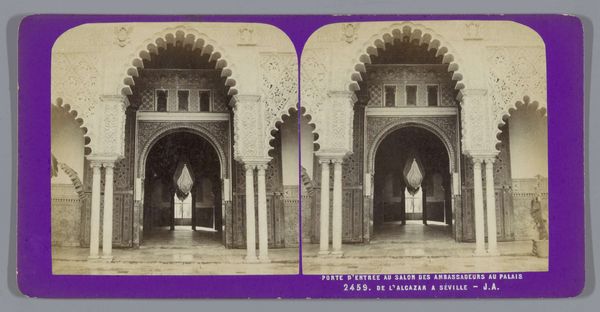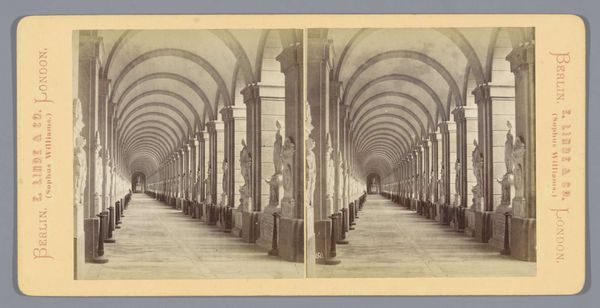
photography, gelatin-silver-print, architecture
#
portrait
#
landscape
#
photography
#
gelatin-silver-print
#
italian-renaissance
#
architecture
#
realism
Dimensions: height 85 mm, width 170 mm
Copyright: Rijks Museum: Open Domain
Curator: Ah, a gelatin-silver print dating roughly from 1870 to 1910, titled "Kruisgang van de Sint-Paulus buiten de Muren te Rome" – or, "Cloisters of St. Paul's beyond the Wall, Rome." The photography seems to focus on architectural spaces and everyday interactions, almost like an open-air museum display for modern tourists. Editor: My first impression is one of muted tranquility. The colonnade receding into the distance creates a strong sense of perspective. The statues along the arcade give the space a somewhat dreamlike or spectral feel, wouldn't you agree? Curator: Yes, definitely. I find myself pondering the intention behind capturing the photograph, whether it aimed at pure aesthetic appeal or had broader cultural aims. In any case, it offers insights into nineteenth-century perceptions and presentations of sacred historical spaces. Editor: To me, this space evokes classicism. I notice that it also presents several symbols of ancient ideals, and simultaneously, an intimate look at the rituals of human life and work within a clearly holy place. The artist may have intended that tension. The robes worn by the individuals also adds to the sense of mystery. Curator: Exactly, especially if we view the statues and those walking through it to understand public access to and interactions with religious structures at this historical juncture. How did they frame themselves within such spaces? Editor: Yes, considering the relationship with classicism, it really makes me consider our place in that lineage of representation: statues representing important gods; holy people processing back and forth through that space. What are we meant to take from that? The shadows that cross the composition imply how they are constantly changing the symbolic nature of that structure by processing through. Curator: Absolutely. Ultimately, this image sparks reflection on cultural legacy and artistic presentation, even within the serene visual language of realism found throughout the landscape. Editor: For me, its visual symbolism reflects a human journey that touches on themes of time, faith, and legacy, with the cloister functioning as a potent stage for contemplation.
Comments
No comments
Be the first to comment and join the conversation on the ultimate creative platform.
